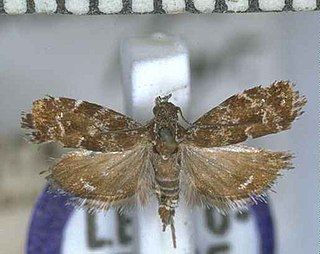
Asterivora analoga is a moth of the family Choreutidae. It is endemic to New Zealand and has been observed in both the North and South Islands. Adults are on the wing in December and January.
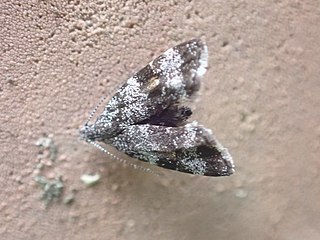
Asterivora antigrapha is a moth in the family Choreutidae. It is endemic to New Zealand and has been observed in the North and South Island. This species inhabits the edge of scrubland. The adults are on the wing in November and December. This species can be found flying the day. It has been hypothesised that this species hibernates over winter.

Asterivora barbigera is a moth in the family Choreutidae. It is endemic to New Zealand and is found in the southern half of the South Island. It inhabits open mountain sides and adults are on the wing in November to January.

Asterivora chatuidea is a moth of the family Choreutidae. It is endemic to New Zealand and has been collected in and around Dunedin. The larvae of this species are leaf miners and hosts include Helichrysum lanceolatum, Olearia quinquevulnera and Pseudognaphalium luteoalbum. Adults of this species has been recorded as being on the wing in November, January and February.

Asterivora colpota is a moth in the family Choreutidae. It was first described by Edward Meyrick in 1911. It is endemic to New Zealand and is found throughout the North and South Islands. It is regarded as a lowland species and adults are on the wing from November until March. This moth has been collected by beating shrubs.

Asterivora exocha is a species of moth in the family Choreutidae. It was first described by Edward Meyrick in 1907 and is endemic to New Zealand. This species has only been observed in the Humboldt Ranges of Otago and inhabits subalpine native bush at elevations of around 3600 ft. Adults of this species are on the wing in December and January and have been observed flying at dusk.

Asterivora fasciata is a species of moth in the family Choreutidae. It is endemic to New Zealand and has been found at Arthur's Pass. The larvae of this species have been reared on Celmisia densiflora and adults are on the wing in January.
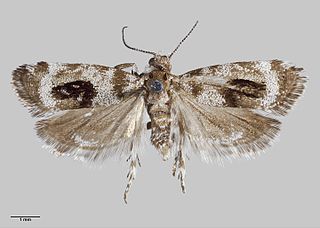
Asterivora inspoliata is a species of moth in the family Choreutidae. It is endemic to New Zealand and has been found in the southern parts of the South Island. Adults are on the wing in December and January.

Asterivora iochondra is a species of moth in the family Choreutidae. It is endemic to New Zealand and was first described by Edward Meyrick in 1911. This species has been observed in both the North and South Island at Mount Holdsworth and Mount Arthur. This species inhabits open spaces on mountains on the forest edge at 3000 ft altitude. Adults of this species are on the wing in February and flies rapidly in sunshine.
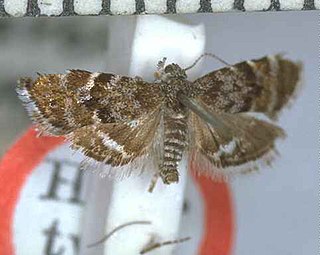
Asterivora marmarea is a species of moth in the family Choreutidae. It is endemic to New Zealand and lives in mountainous habitats. It has been observed in the lower parts of the North Island and the upper South Island. The larval host of this species is Celmisia gracilenta and adults of this species are on the wing in December and January.
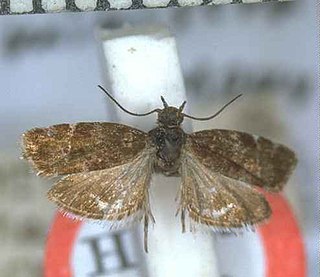
Asterivora ministra is a species of moth in the family Choreutidae. It is endemic to New Zealand and has been observed at Mount Holdsworth and Mount Arthur. This species inhabits alpine native herbage above the tree line. The adults are on the wing in February.

Asterivora nivescens is a species of moth in the family Choreutidae. It is endemic to New Zealand and has been observed in Nelson. This species inhabits native herbage on mountain sides. Adults of this species are on the wing in January.
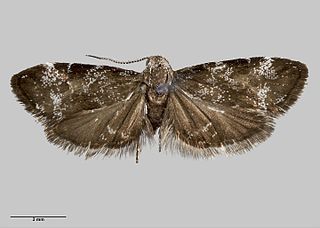
Asterivora tristis is a species of moth in the family Choreutidae. It is endemic to New Zealand and has been observed in Tongariro National Park. Adults of this species are on the wing in January.

Asterivora tillyardi is a species of moth in the family Choreutidae. It is endemic to New Zealand and collected at Aoraki / Mount Cook. Adults of this species are on the wing in March.
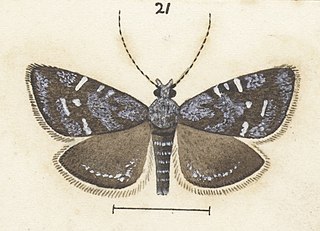
Asterivora symbolaea is a species of moth in the family Choreutidae. It is endemic to New Zealand and has been observed in Arthur's Pass. This species lives in subalpine habitat. Adults of this is on the wing in January and February. Larvae are hosted by Celmisia prorepens.

Amblyptilia epotis is a moth of the family Pterophoridae. It is endemic to New Zealand and is found in the South and Stewart Islands. It inhabits mountainous terrain covered in alpine vegetation or alternatively alpine wetland habitat. The adults of this species are on the wing from February to March. In appearance the adults of this species are variable in colour however this species can be distinguished from similar species by the oblique apical streak on its forewings as well as the patch of white on the costa cilia towards the apex of the forewing.

Tingena chloritis is a species of moth in the family Oecophoridae. It is endemic to New Zealand and has been found in the South Island. Larvae of this species feed on leaf litter. The adults of this species are light flyers and are attracted to light.

Tingena hemimochla is a species of moth in the family Oecophoridae. It is endemic to New Zealand and has been observed in the North Island. Adults of this species are on the wing from December until March.

Tingena letharga is a species of moth in the family Oecophoridae. It is endemic to New Zealand and has been observed in Otago. Adults are on the wing in December and January.

Orthenches dictyarcha is a moth of the family Plutellidae first described by Edward Meyrick in 1927. It is endemic to New Zealand and has been observed at Arthur's Pass and at Hollyford Valley in Fiordland. It is one of the larger species in its genus and is similar in appearance to O. homerica. Its preferred habitat is beech forest and adults are on the wing in January.





















